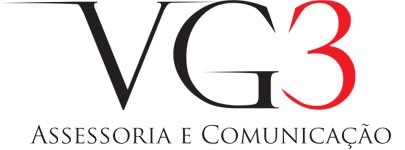9 3 Activity-based Costing Financial and Managerial Accounting
This approach, activity-based costing, first identifies the activity centers in an organization. It then assigns costs to each activity center based on the number of resources it uses. ABC contrasts with other cost allocation methods, such as traditional costing, which simply assigns costs to products or services based on a predetermined rate. Utilizing cost drivers makes the distribution of manufacturing overhead much more straightforward. To accurately calculate the price of a product, it is critical to appropriately assign the manufacturing overhead costs.
- For example, if the cost of a single purchase order is $100, managers can focus on letting the production system automatically place purchase orders, or on using procurement cards as a way to avoid purchase orders.
- Activities are what we refer to as cost objects because they consume overhead resources.
- This explains the need for a refined overhead allocation system such as activity-based costing.
- The most challenging part of thisstep is narrowing down the activities to those that have thebiggest impact on overhead costs.
Activity-based costing is used to grasp costs better, enabling businesses to form a pricing strategy that is more appropriate for the product or service offered. Using a plantwide approach of allocatingcosts to products, the plaintiff’s costing expert was able tosupport the allegation of predatory pricing. The defendant’s expertwitness, an accounting professor, used activity-based costing todispute the allegation. Figure 3.9 presents the three allocation methods, using SailRiteas an example.
Activity-Based Costing Process
This accounting method of costing recognizes the relationship between costs, overhead activities, and manufactured products, assigning indirect costs to products less arbitrarily than traditional costing methods. However, some indirect costs, such as management and office staff salaries, are difficult to assign to a product. Second, it creates new bases for assigning overhead costs to items, allocating costs based on the activities that generate costs rather than on volume measures, such as machine hours or direct labor costs. This makes it possible for costs to be allocated based on the activities that generate costs. Second, it creates new bases for assigning overhead costs to items such that costs are allocated based on the activities that generate costs instead of on volume measures, such as machine hours or direct labor costs. We have discussed three different methods of allocating overhead to products—plantwide allocation, department allocation, and activity-based costing.
A Practical Approach to Activity-Based Costing
Direct material and direct labor costs range from nonexistent to minimal in the service industry, which makes the overhead application even more important. The number and types of cost pools may be completely different in the service industry as compared to the manufacturing industry. For example, the health-care industry may have different overhead costs and cost drivers for the treatment of illnesses than they have for injuries. Some of the how is overhead allocated in an abc system overhead related to monitoring a patient’s health status may overlap, but most of the overhead related to diagnosis and treatment differ from each other. The management of Parker Company would like to useactivity-based costing to allocate overhead rather than use oneplantwide rate based on direct labor hours. The following estimatesare for the activities and related cost drivers identified ashaving the greatest impact on overhead costs.
Some examples of activities include developing items, putting together machines, running machines, and distributing products. If a company does not operate in such an environment, then it may spend a great deal of money on an ABC installation, only to find that the resulting information is not overly valuable. Use activity drivers to apportion the costs in the secondary cost pools to the primary cost pools. In ABC, an organization’s overhead expenses, which include indirect expenditures such as lighting, heating, and marketing, are allotted to an activity in the same proportion as its direct costs.
What are the Steps of Activity-Based Costing?
This requires interviewing and meeting with personnel throughout the organization. Companies that use activity-based costing, such as Hewlett Packard and IBM, may identify hundreds of activities required to make their products. The most challenging part of this step is narrowing down the activities to those that have the biggest impact on overhead costs. An ABC system can sort through these additional overhead costs and help you determine which customers are actually earning you a reasonable profit. This analysis may result in some unprofitable customers being turned away, or more emphasis being placed on those customers who are earning the company its largest profits. Activity-based costing (ABC) is a cost allocation method that assigns costs to activity centers.
Accurate resource data
There may be several of these secondary cost pools, depending upon the nature of the costs and how they will be allocated. It can help to avoid a large number of cost pools, to reduce the complexity of the ABC system. Activity-based costing is useful for gaining a greater understanding of which activities and cost objects within a business absorb the most (and least) overhead. With this information, a management team can engage in the targeted reduction of overhead costs.
